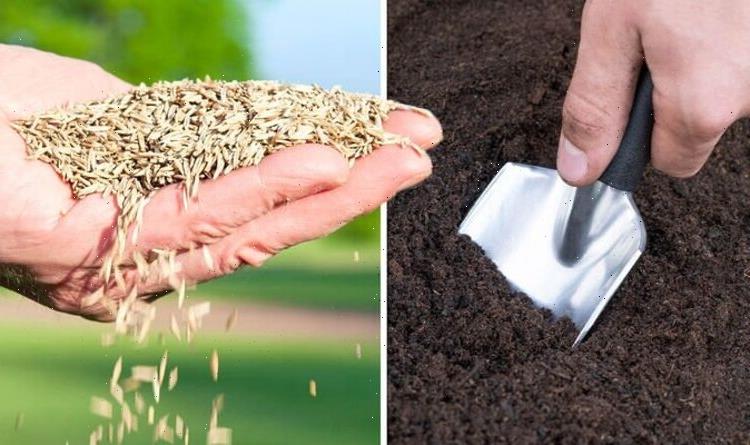Homebase offers advice for preparing your lawn in March
We use your sign-up to provide content in ways you’ve consented to and to improve our understanding of you. This may include adverts from us and 3rd parties based on our understanding. You can unsubscribe at any time. More info
Lawn seed will germinate in as little as 10 days, leaving your grass looking fuller and more luscious week after week as the seedlings grow. While spring is a great time to begin sowing these resilient seeds, it’s not as simple as just sprinkling them over the top of existing grass. Preparing the seedbed is crucial to get the best results, and these are the eight steps you should take to prepare your garden lawn for sowing.
How to prepare your lawn before sowing seeds
Lawn seed sprinkled over the top of existing grass is the easiest way to fill gaps, but it won’t be as successful as seeds which are grown in a well-prepared seedbed.
Weeding and cultivation are key to creating the perfect growing conditions for grass seed, and it can all be done in eight simple steps.
According to the Royal Horticultural Society, the aim of seedbed preparation should be to achieve a “fine tilth” on the surface, but where should you begin?


Clear the seedbed
Removing weeds should be the first step to sowing any kind of seed, but it is especially important when it comes to grass seed.
Start by removing visible weeds by hand and focus on lifting large clumps of perennials such as couch grass or bindweed.
The RHS recommends using a weed killer to tackle more stubborn growth, though you should always avoid using residual weeding products.
This is because residual weed killers can remain in the soil and prevent the grass seed from germinating.

Break up the soil
Once your lawn is free of weeds, it’s time to start lifting the soil to refresh the seedbed.
Use a sharp trowel to dig or rotovate the site to a depth of around eight to 10 inches deep.
Rotovating is an essential part of lawn maintenance and will help to maintain the quality of the grass while the seed grows.
Feed the soil
The RHS recommends feeding the soil after digging it over to help it retain maximum moisture.
Dig in well-rotted manure or other organic matter to sandy and dry soil types – your lawn seed will thank you for it in the long run.
Avoid using un-rotted organic matter as this will cause the soil surface to sink unevenly as it decays.
DON’T MISS:
When to cut grass after winter: Exact date you should start mowing [REVEAL]
Lawn care: How to mow your lawn to promote ‘healthy growth’ [INSIGHT]
‘Effective’ methods for getting rid of ‘pesky weeds’ [ANALYSIS]

Leave the lawn to settle
Even though the cultivation process is now complete, your lawn is still not ready to be filled with fresh grass seed.
It is best to leave the seedbed to settle for several days, or even weeks before sowing.
The RHS recommends leaving it for as long as five to six weeks if possible.
Remove fresh weeds
After your freshly cultivated soil has been left to settle, you should always do one more round of weeding before sowing the seed.
Before the next stage of preparation, remove any weeds that have germinated. Hand-removal is best but you can also use a contact weedkiller. Again, you should avoid using residual weedkillers, as it could hinder the germination process.
Rake the soil
Take a clean rake to run through the clear, firmed soil.
You should rake the soil several times in different directions for the best results before sowing.
Add fertiliser
The final step in your seedbed preparation is to apply a general-purpose fertiliser.
You should aim to rake in around 70g per square metre of soil.
Sow the seed
Once your seedbed is fully prepared, it’s time to sow your fresh grass seed.
The RHS recommends the following seed quantities for these types of soil:
- 30g per square metre of high-quality ornamental turf
- 20-25g per square metre of general-purpose ornamental turf
- 15-20g per square metre of general-purpose or utility turf with ryegrass
Source: Read Full Article
